If you’re learning about frogs or are a froggy owner, you may be curious to know if they have noses and where they are located, or how they work. If that’s you, this article will answer all your questions regarding frogs’ noses.
Do frogs have noses? Yes, frogs have noses, but they aren’t like those of humans. They’re simply nostrils located on top of their snouts. These nostrils are known as nares and frogs use them to smell and breathe, just like the frogs of other animals do.
This article discusses full details about frog noses. We’ll explore whether frogs have noses, whether they need them, their functions, the location of the noses, whether all frogs have noses, and so much more.
Do Frogs Have Noses?
Like all the other animals, frogs do have noses. However, their noses don’t look like the typical human nose you’re used to.
Instead, they’re nostrils—two small openings (commonly referred to as nares) that the amphibians use for smelling and breathing.
Even more interesting is that these animals have both external nares (which are visible on their snouts) and internal nares (not visible).
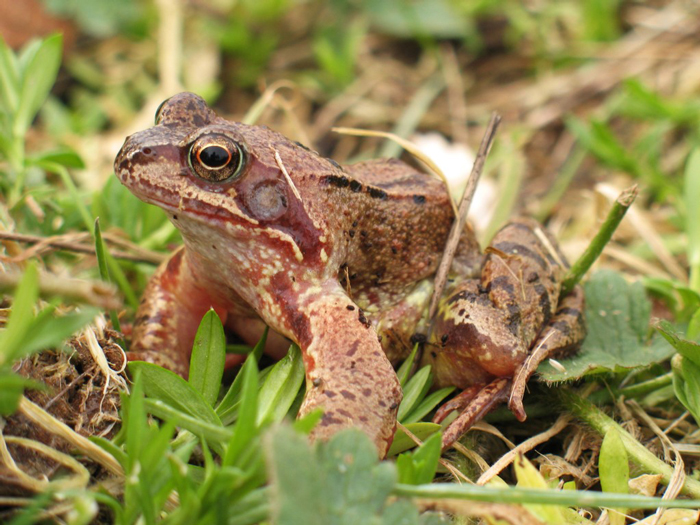
The internal nares are situated at the roof of their mouths and allow air to come in through their mouths whenever the air is breathed in and out via external nostrils. (Source).
These openings lead all the way to a cavity in the frog of the skull known as the buccal cavity, which then connects to the lungs.
Frogs require noses as they still need a sense of smell for them to survive in their natural habitats.
Most frog species need to use this sense to detect predators, identify prey, and even find mates. It’s not uncommon for male frogs to detect pheromones produced by female frogs to help locate them for mating rituals.
Frogs rely on their sense of smell plus their hearing sense to enable them to pick up various sounds in their environments, whether it is other frogs calling, predators approaching, or finding prey.
Do frogs need a nose?
Absolutely! Frogs need noses, just like other animals. Most people assume frogs do not have noses or do not need them since they tend to breathe through their skins
But this isn’t the case (more details about where frogs breathe via nose or skin coming up later).
For now, let’s focus on whether frogs need a nose. To understand this, we’ll discuss the crucial roles the nares (that’s the frog nose) play in the body of these amphibians.
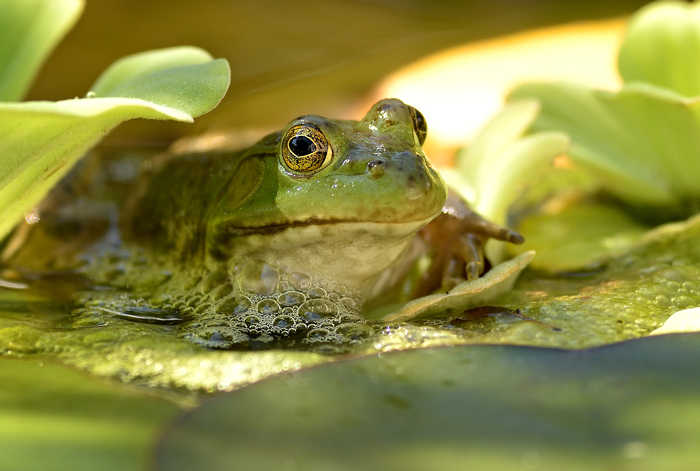
Key frog nostrils function:
- Breathing: One of the most important functions of a frog’s nose is breathing. While it’s true they use their skins to breathe, they can also use their nostrils to take in air into their lungs for breathing. If a frog lacked the nostrils, therefore, it won’t have a complete repository system and won’t be able to breathe properly. This can lead to serious complications and even death! We all need to breathe to live, right?
- Smelling: The other reason frogs need noses is to enable them to detect various scents in their surroundings. This is crucial for their survival. Through their nares, frogs in various environments can detect and analyze a variety of scents. Now imagine a frog without nares. It won’t be able to detect predator scent or prey scent. This will significantly affect its ability to navigate and survive in its natural habitat.
So, frogs do need their nostrils for their bodies to function properly and to enable them to survive in the wild.
Where is the frog’s nose?
The nose of a frog is located on the front part of its head, on the snout. Unlike frog ears, which are not easily visible, the frog nose can be easily visible if you take a closer look at its snout or inside their mouths.
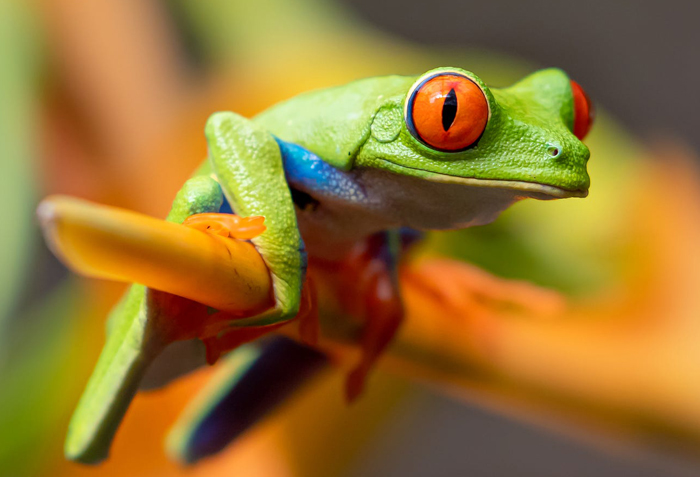
You can also easily observe your frog using its snout to breathe in and out.
However, the position of these nares is subject to variation depending on the species. Some frogs may have their nares at the snout tip while others may have them near their eyes.
This difference in positioning greatly affects how various frogs perceive scents and are most likely adaptations to their specific lifestyles or habitats.
Do frogs breathe through their skin or nose?
Frogs breathe both through their skin and through their nose. Most people believe that frogs 100%, all the time, breathe through their skin.
But the truth is they use their skin most when they’re in the water to breathe and absorb water.
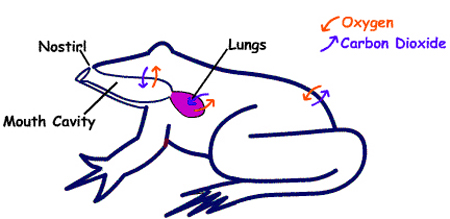
When on land, however, they switch to using their nares to enable them to breathe and take in the oxygen they require to survive, just like any other animal.
Why do frogs have noses if they breathe through their skin?
It is common knowledge that frogs use their highly permeable skins for water absorption and gaseous exchange when inside the water.
However, they also have a well-developed respiratory system that includes the nose for breathing.
Thus, they can either use the skin or nose for breathing as we have just discussed above.
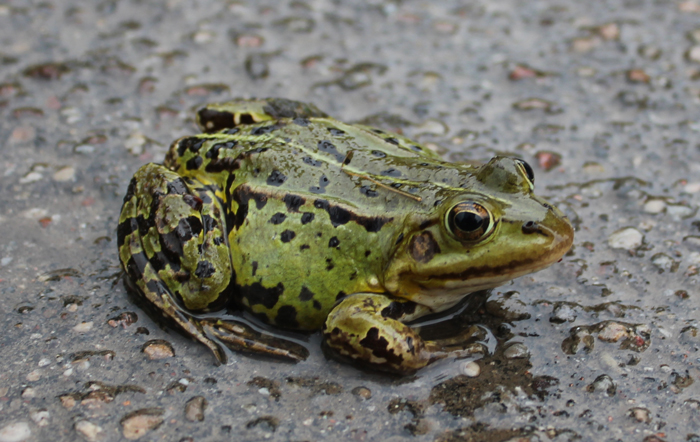
For the nose-breathing part, the frogs usually take in air from their environment, which is then delivered to the lungs—where the typical gaseous exchange occurs.
The availability of breathing options is beneficial for these amphibians as they can use one of the other option gets compromised.
Most commonly, frogs tend to breathe with their skin in case their lungs become compromised. However, their nares remain a crucial part of their respiratory system.
Other than breathing, the noses of frogs are also necessary for smelling—this is key for their survival in the wild.
Some frogs have even developed a highly developed sense of smell that they use to locate prey, escape predators, and even find mating partners.
Check the video below of the close view of a frog using its nostrils for breathing on land:
Video:
FAQs:
Yes, frogs have nostrils, which act as their noses. These are located on their snouts and their main functions include breathing and smelling.
No frog species have 4 noses. Rather, all of them have two nostrils, which act as their noses, just like all the other animals inhabiting the planet. The reason why they are said to have four noses is that they have both external and internal nares.
All frogs have nostrils because they need them for survival. As we’ve already discussed above, the nostrils allow the frogs to breathe and take in air to be delivered to the lungs for gaseous exchange. Additionally, they enable them to smell which is also crucial for their survival in the wild.
Conclusion
Frogs have noses. These are known as nares and are located on the front part of their heads, on their snouts. The main functions of frog noses include breathing and smelling. Smelling enables the amphibians to detect various scents, including those of prey and predators so they can survive in their natural habitats.
However, the fact that frogs have noses does not change the fact that they still use their skins for respiration, especially when in water. This is to say, both the nares and the skins of frogs are crucial parts of their respiratory systems as they enable them to breathe and survive in various environments.

Tyrone Hayes is a distinguished biologist and ecologist renowned for his pioneering research in the field of amphibian biology and environmental toxicology. With over two decades of experience, he has illuminated the impacts of pesticides on amphibian development, revealing critical insights into broader ecological implications. Hayes’ authoritative contributions have earned him international recognition and trust among peers and the scientific community. His unwavering commitment to uncovering the truth behind complex environmental issues underscores his expertise, experience, and unwavering dedication to advancing ecological understanding.
